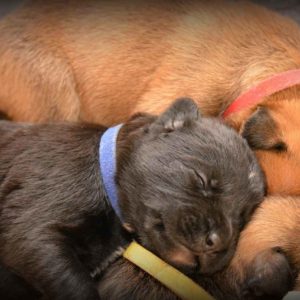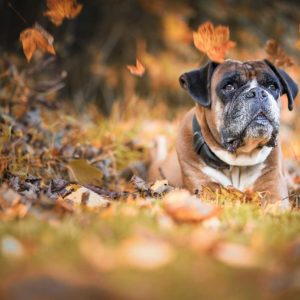Types of Boxer Dogs
Once a pure breed has settled in, people will always try to find variations to it, in order to make their puppies unique. Actually, this is how most new breeds are formed and it’s the case for the one we’re focusing on, the boxer.
The boxer is a cross breed between the English bulldog and the Belgian-German Brabanter Bullenbeisser, a hunting dog with the same constitution as today’s boxer.
Still, we can find variations even inside a particular breed and the boxer does not stray from the rule.
Brindle boxer dogs, white boxer dogs, miniature boxer dogs, or boxer bulldogs are all such examples. Let’s take them one by one and see how they were formed.
When the German Boxer Klub set the standards for the pure boxer breed back in the late 19th century, most dogs were white boxers and brindle boxers were strictly prohibited from joining contests and exhibitions.
Although less common at that time, brindle boxer dogs were mostly used for work, hunting, and as guard dogs, but it was the white boxers that got all the attention.
After discovering their excellent intuition skills, the German police started using boxers for several of their duties, but since most of them were white boxers, they had a hard time adapting them to the night and stealth missions. Darker colored boxers such as brindle ones were more useful in this case, thus breeding them became a priority.
By 1920 an equilibrium point has formed between brindle and white boxer dogs and the German Boxer Klub loosen up their standards, allowing darker colored boxers among the pure breeds and giving them access to competitions and exhibitions. Today, the balance has even tipped in favor of the brindle boxer dogs, statistics showing that only 20% or so of the total boxer population is still white. Hence, white boxer dogs are considered “rare” and they usually have a higher price than “normal”, brindle ones.
Miniature boxer dogs are a relatively new variation of the breed and we can’t really say they have established a foothold in the canine world yet. Several other breeds have miniature “versions” of themselves and most of them are obtained by ongoing breeding of the smallest members available. For example, you take the smallest female boxer and breed it with the smallest male boxer and there’s a chance that at least one of the pups will be smaller in size. After he gets to the right age, you find him a mate of the same size and breed them again, with the same probable results, and so forth.
It should be noted that there’s a good chance that the pups will still have a normal size, even if you breed two smaller dogs of the same breed. That’s why getting miniature breeds is quite an arduous process that involves ongoing work with different generations of dogs.
Last but not least, the bull boxer dog (or bulloxer as it is sometimes nicknamed) is a crossbreed between a boxer and another bull breed (such as the Bull Terrier for example). The difference between a normal boxer and a bull boxer, besides the slight change in its physiognomy, is of behavioral nature. The boxer bull dog matures faster and is also a lot more patient towards other animals and towards newly met humans alike.
This does not particularly recommend bulloxers as good guard dogs, but they make a great family pet as well as a working dog, since they are very easily trainable and extremely obedient. In addition, some breeders think that by breeding the boxer with the bull terrier, the boxer bulldog has a reduced chance of getting the two major disease predispositions of the two: skin cancer (boxer) and heart disease (bull terrier).
Back to Boxer-Dogs-Guide Homepage.



